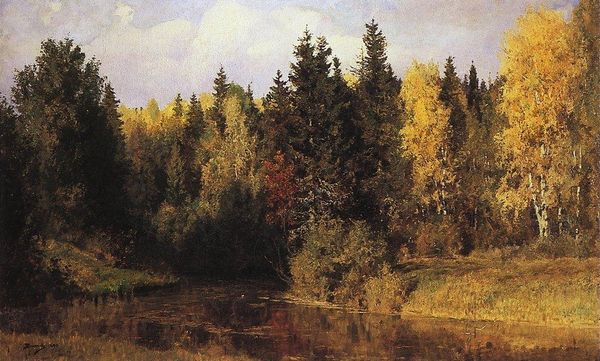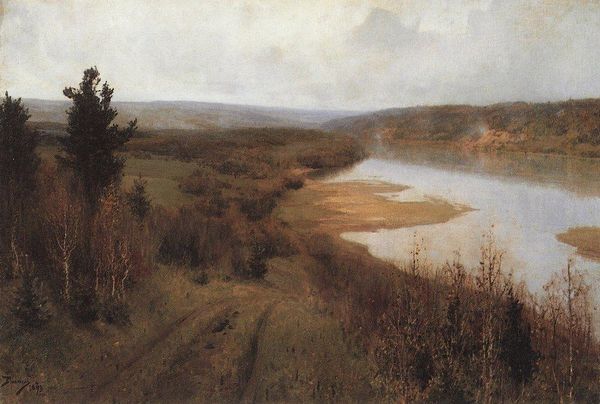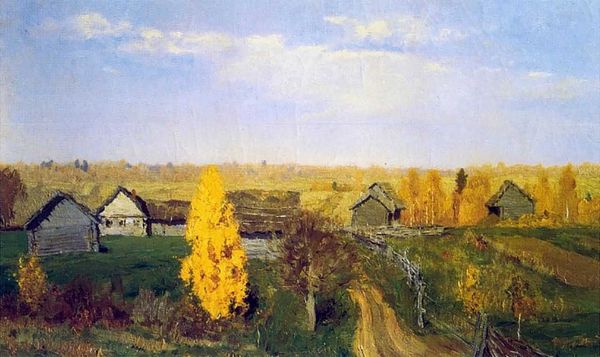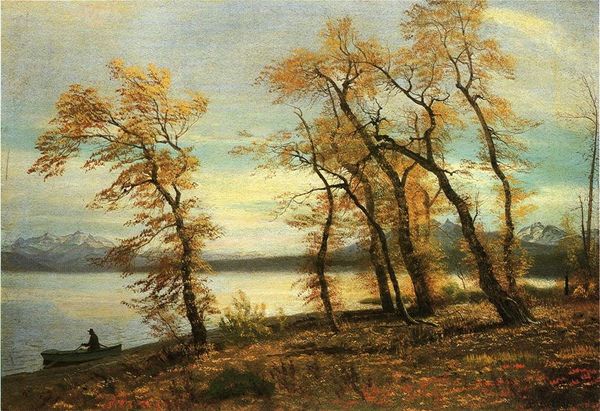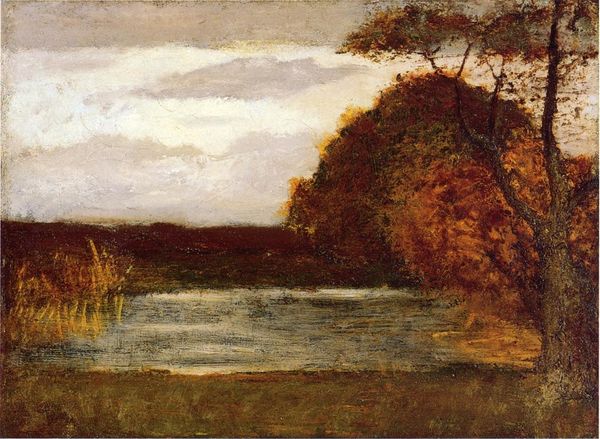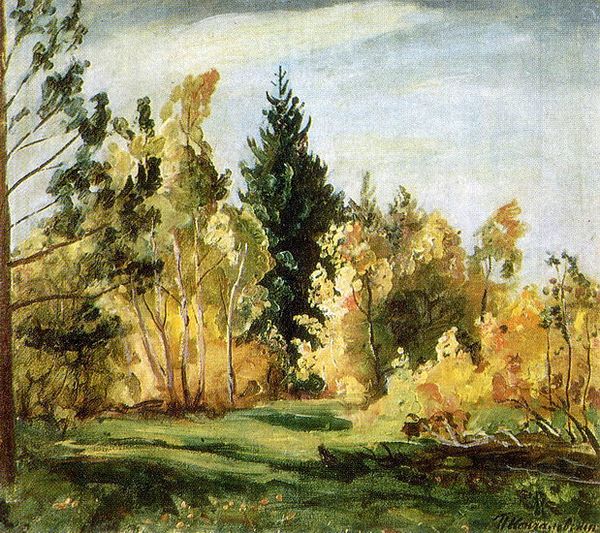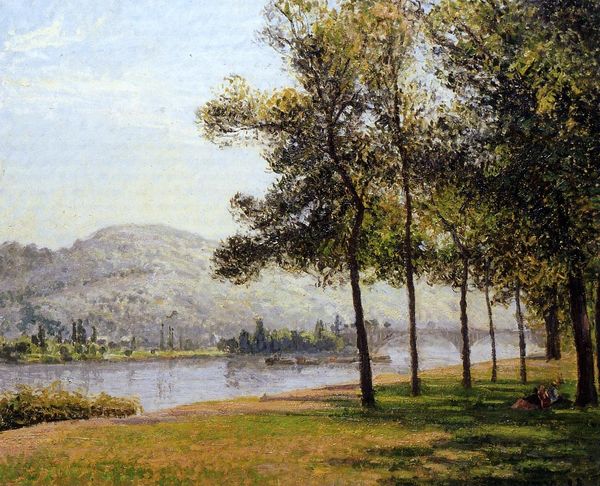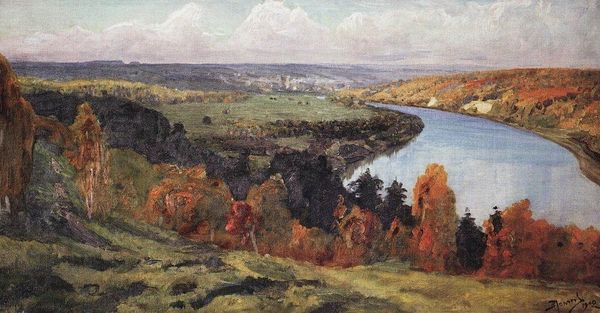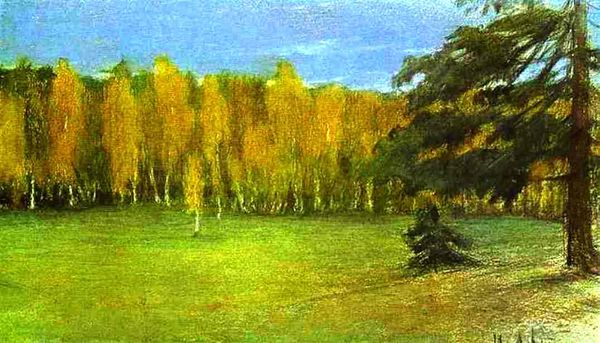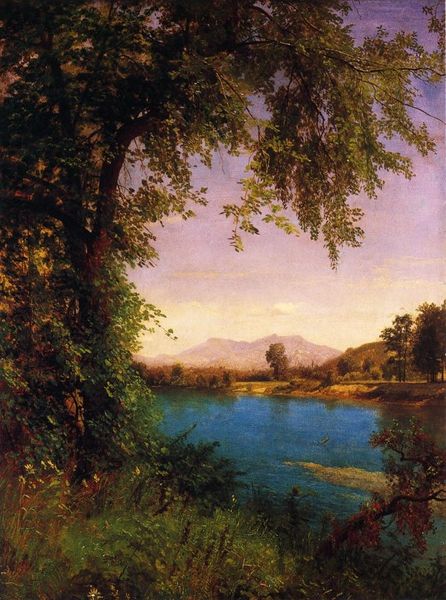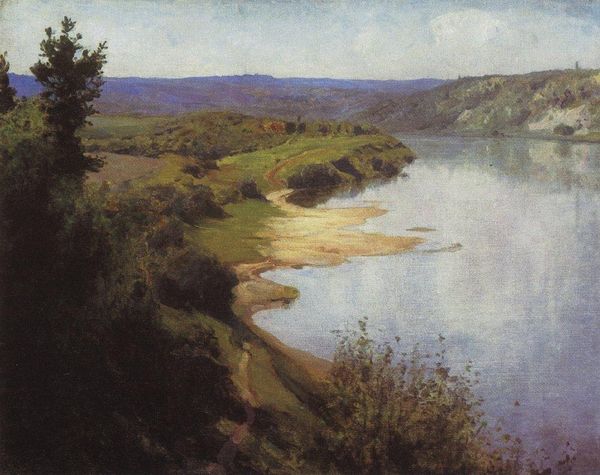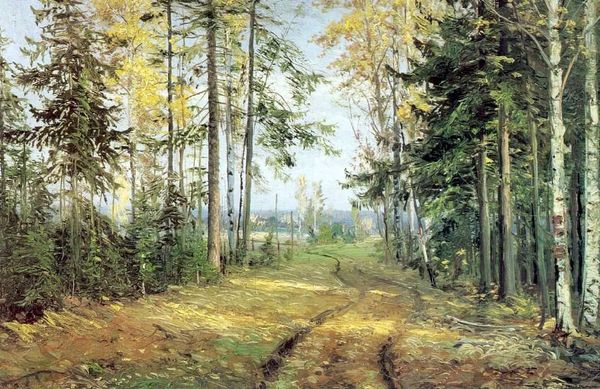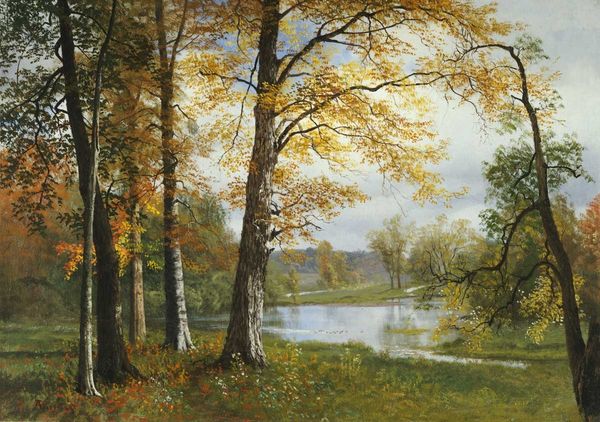
Copyright: Public domain
Curator: Standing here, we’re facing Vasily Polenov’s "Indian Summer," completed in 1893. Editor: There's a quiet serenity that radiates from this scene. The way the golden light drapes across the riverbank—it's almost dreamlike. Curator: Absolutely. Polenov was a master of capturing the transient moods of nature. Note the recurring symbolic significance of water as life, regeneration and passage of time throughout his work. Editor: And it feels intensely Russian, doesn’t it? Beyond just landscape, the artwork evokes a sense of national identity, connecting it with a specific place. Is there any significance behind calling it "Indian Summer"? Curator: Within Russian culture, an Indian Summer is considered an invitation. With one last spark before winter. Notice the sky and the river. Polenov uses brushstrokes to guide us from chaos toward a calming end to the work. Editor: I do like how the foliage bursts into ochre, yellow, and orange hues, colors often seen as potent symbols across varied cultures—representing prosperity, warmth, transition and memory. But beneath the bright colours I also see shadows – perhaps a nod to something not entirely rosy regarding Russia's historical landscape? Curator: Well, art seldom lives in a vacuum. At the time Polenov made the oil on canvas painting, Russian society was experiencing great transformations. However, the symbols used here point not to specific socio-political struggles, but to human adaptation within seasonal change. Editor: But even the turn of seasons is connected to land, access, privilege... the sense of romanticism is impossible for me to disconnect from broader discussions of nation and identity. I'm also seeing an almost spiritual, ecological statement – one of preservation. Does nature ever recover after exploitation? Curator: What I take from the piece is this incredible feeling of nostalgia. The golden hues, that gentle light. For Polenov it served a specific function within the aesthetic, as he developed ways of seeing Russia. Editor: Still, it remains potent beyond Polenov, carrying our modern concerns as viewers through all of us today. I see an elegy here, almost... it encourages dialogue, even disagreement, but always in good faith. Curator: Ultimately that’s the most profound achievement of art, I think. Creating room for differing interpretations. Editor: Agreed. Now where to next, I wonder?
Comments
No comments
Be the first to comment and join the conversation on the ultimate creative platform.
